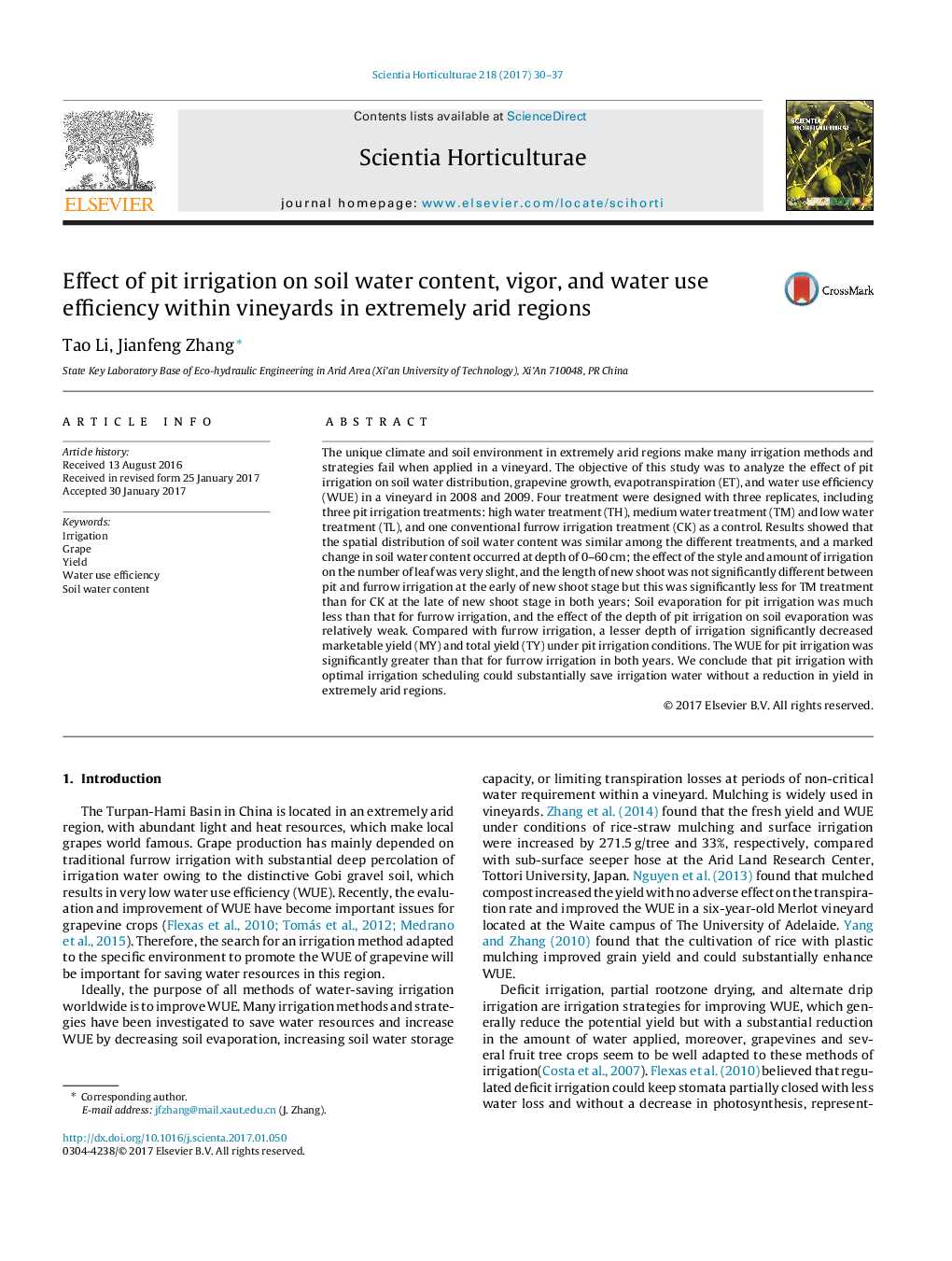| Article ID | Journal | Published Year | Pages | File Type |
|---|---|---|---|---|
| 5769524 | Scientia Horticulturae | 2017 | 8 Pages |
â¢Effect of the style and amount of irrigation on the number of leaf was very slight.â¢Pit irrigation could save water mainly due to a decrease in soil evaporation.â¢Pit irrigation could increase market yield and improve WUE.
The unique climate and soil environment in extremely arid regions make many irrigation methods and strategies fail when applied in a vineyard. The objective of this study was to analyze the effect of pit irrigation on soil water distribution, grapevine growth, evapotranspiration (ET), and water use efficiency (WUE) in a vineyard in 2008 and 2009. Four treatment were designed with three replicates, including three pit irrigation treatments: high water treatment (TH), medium water treatment (TM) and low water treatment (TL), and one conventional furrow irrigation treatment (CK) as a control. Results showed that the spatial distribution of soil water content was similar among the different treatments, and a marked change in soil water content occurred at depth of 0-60Â cm; the effect of the style and amount of irrigation on the number of leaf was very slight, and the length of new shoot was not significantly different between pit and furrow irrigation at the early of new shoot stage but this was significantly less for TM treatment than for CK at the late of new shoot stage in both years; Soil evaporation for pit irrigation was much less than that for furrow irrigation, and the effect of the depth of pit irrigation on soil evaporation was relatively weak. Compared with furrow irrigation, a lesser depth of irrigation significantly decreased marketable yield (MY) and total yield (TY) under pit irrigation conditions. The WUE for pit irrigation was significantly greater than that for furrow irrigation in both years. We conclude that pit irrigation with optimal irrigation scheduling could substantially save irrigation water without a reduction in yield in extremely arid regions.
